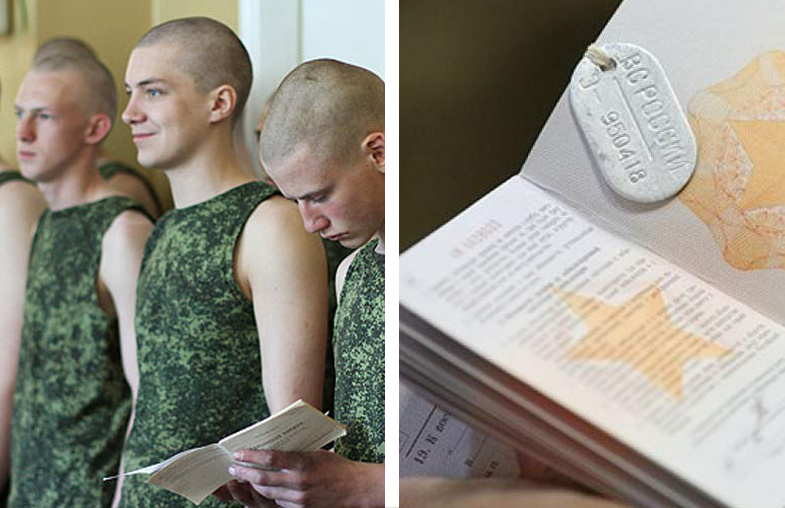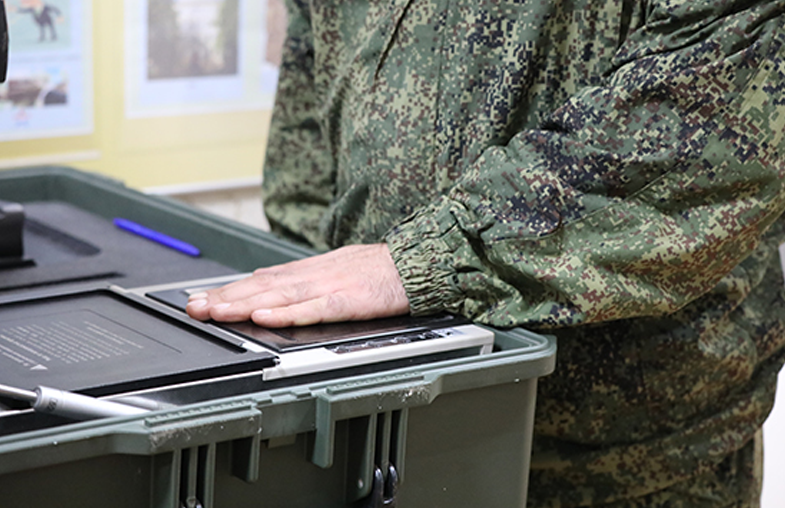Antecedentes:
En Rusia, los militares fueron identificados tradicionalmente mediante tarjetas de identidad de papel o chapas metálicas colgadas del cuello. Dichos métodos de identificación exigieron un refuerzo de la seguridad en la gestión de documentos, armas o permisos de acceso a instalaciones secretas.
En 2014, el Ministerio de Defensa de la Federación de Rusia decidió implementar pasaportes electrónicos de los militares: tarjetas de identidad de plástico que permiten almacenar datos personales, llaves electrónicas de acceso, firmas electrónicas y datos biométricos. Las tarjetas son emitidas por los comisariados militares y se utilizan en unidades militares, instituciones de medicina y educación de las fuerzas armadas. Angstrem, una sociedad por acciones rusa, llevó a cabo la implementación del proyecto.
En los centros de reclutamiento militar, cada recluta debe pasar por el proceso de registro dactiloscópico completo (escaneo de huellas dactilares, impresiones de control y huellas palmares).
Tareas:
- Garantizar una alta resolución de imágenes de huellas dactilares y palmares para fichas dactiloscópicas de los militares.
- Garantizar una alta calidad de escaneo de la piel demasiado seca, «desgastada» o húmeda. Eliminar la borrosidad en las imágenes de huellas rodadas.
Trabajo realizado
En el mundo, existen pocos dispositivos que permitan capturar huellas palmares. El escáner DS-45, cuya eficiencia fue demostrada por su uso en el Ministerio del Interior de Rusia, cubrió todas las necesidades del proyecto, tanto en términos de funcionalidad requerida, como de costos. Para completar las tareas y alcanzar el objetivo, se decidió utilizar este producto:
- Más de 200 escáneres DS-45 fueron producidos y suministrados para el registro dactiloscópico de alta calidad.
- El kit de desarrollo LSSDK fue proporcionado para capturar imágenes de huellas dactilares rodadas, así como para su posterior procesamiento y almacenamiento en la base de datos de los militares.
Calcular una solución equivalente
Resultados y efecto
La empresa Angstrem implementó en su proyecto datos biométricos de alta calidad, reduciendo así los riesgos de fallos en la identificación/verificación en los sistemas de control de acceso del Ministerio de Defensa.
Iniciada por el Ministerio de Defensa, la transición al uso de pasaportes electrónicos permitió a los militares gestionar el acceso a instalaciones protegidas y recursos de información, registrar y confirmar los derechos a recibir servicios sociales, financieros y otros, así como monitorear su concesión efectiva a los militares.
Entre las principales funciones del proyecto se encuentran el sistema biométrico de control de acceso a instalaciones, la gestión de alimentos, el registro del progreso educativo y el acceso al entorno de información unificado.
Calcular una solución equivalente
Publicaciones:
- El ejército ruso introduce pasaportes electrónicos
- Los militares de la Flotilla del Caspio serán provistos de tarjetas electrónicas de identidad
- La información sobre los reclutas de la Unión de Aviación del Extremo Oriente de las Fuerzas Aeroespaciales de la Federación Rusa será registrada en el Sistema Automatizado «Pasaporte»
- Las tarjetas electrónicas de los reclutas serán integradas en el sistema de control de alimentación de los militares


